Abstract:
The traditional rule-based congestion control algorithms cannot set congestion window size flexibly, resulting in the inadaptation of the dynamic networks. This article p...Show MoreMetadata
Abstract:
The traditional rule-based congestion control algorithms cannot set congestion window size flexibly, resulting in the inadaptation of the dynamic networks. This article presents a method to model end-to-end TCP congestion control problem using classification techniques. The network status parameters as the input and the type of network status as the output are defined through the analysis of some existing congestion control algorithms. NewReno, CUBIC, and Compound are used as feedback to produce the training data of the XGBoost classifier. The experimental results show that the classifier effectively shapes the strategies of three outstanding congestion control algorithms and almost achieves the same throughput, delay, and fairness. The proposed method makes the congestion control algorithm able to learn from data produced by network.
Published in: IEEE Transactions on Reliability ( Volume: 72, Issue: 1, March 2023)
Funding Agency:
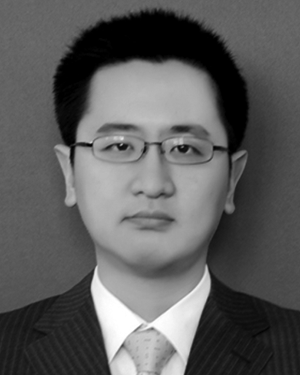
School of Computer Science and Technology, Harbin University of Science and Technology, Harbin, China
Research Center of Information Security and Intelligent Technology, Harbin University of Science and Technology, Harbin, China
Guanglu Sun (Member, IEEE) received the B.S. degree in computer science and technology, the M.S.degree in pattern recognition and intelligent system, and the Ph.D. degree in computer application technology from the Harbin Institute of Technology, Harbin, China, in 2001, 2003, and 2008, respectively.
He was a Visiting Scholar with Northwestern University, Evanston, IL, USA, from 2014 to 2015. He is currently a Professor and...Show More
Guanglu Sun (Member, IEEE) received the B.S. degree in computer science and technology, the M.S.degree in pattern recognition and intelligent system, and the Ph.D. degree in computer application technology from the Harbin Institute of Technology, Harbin, China, in 2001, 2003, and 2008, respectively.
He was a Visiting Scholar with Northwestern University, Evanston, IL, USA, from 2014 to 2015. He is currently a Professor and...View more
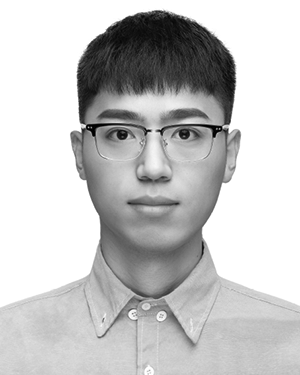
School of Computer Science and Technology, Harbin University of Science and Technology, Harbin, China
Research Center of Information Security and Intelligent Technology, Harbin University of Science and Technology, Harbin, China
Chuan Li received the B.S. degree in internet of things engineering from the Qufu Normal University, Shandong, China, in 2017, and the M.S. degree in computer science and technology from the Harbin University of Science and Technology, Harbin, China, in 2020.
His current interests include machine learning and computer networks.
Chuan Li received the B.S. degree in internet of things engineering from the Qufu Normal University, Shandong, China, in 2017, and the M.S. degree in computer science and technology from the Harbin University of Science and Technology, Harbin, China, in 2020.
His current interests include machine learning and computer networks.View more
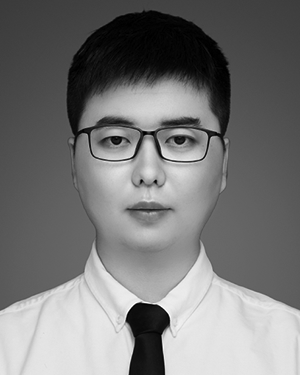
School of Computer Science and Technology, Harbin University of Science and Technology, Harbin, China
Research Center of Information Security and Intelligent Technology, Harbin University of Science and Technology, Harbin, China
Yu Ma received the B.S. degree in computer science and technology, in 2018, from the Harbin University of Science and Technology, Harbin, China, where he is currently working toward the master’s degree in computer science and technology.
His current interests include computer networks, reinforcement learning, and deep learning.
Yu Ma received the B.S. degree in computer science and technology, in 2018, from the Harbin University of Science and Technology, Harbin, China, where he is currently working toward the master’s degree in computer science and technology.
His current interests include computer networks, reinforcement learning, and deep learning.View more
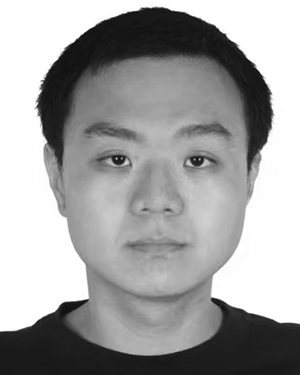
School of Computer Science and Technology, Harbin University of Science and Technology, Harbin, China
Research Center of Information Security and Intelligent Technology, Harbin University of Science and Technology, Harbin, China
Shaobo Li received the M.S. degree in computer science and technology from the Harbin University of Science and Technology, Harbin, China, in 2018.
His current interests include machine learning and computer networks.
Shaobo Li received the M.S. degree in computer science and technology from the Harbin University of Science and Technology, Harbin, China, in 2018.
His current interests include machine learning and computer networks.View more
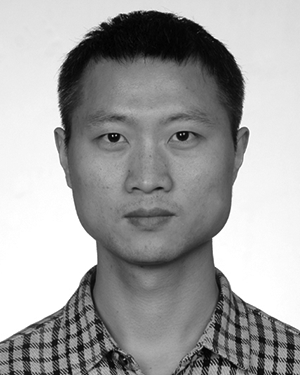
School of Computer Science and Technology, Harbin University of Science and Technology, Harbin, China
Research Center of Information Security and Intelligent Technology, Harbin University of Science and Technology, Harbin, China
Jing Qiu received the B.S. degree in civil engineering from Harbin Institute of Technology, Harbin, China, in 2005 and the M.S. degree in computer science and technology from Harbin University of Science and Technology, Harbin, China, in 2009, and the Ph.D. degree in computer science and technology from Harbin Institute of Technology, in 2015.
He was with Harbin University of Science and Technology, from 2017 to 2021.
Jing Qiu received the B.S. degree in civil engineering from Harbin Institute of Technology, Harbin, China, in 2005 and the M.S. degree in computer science and technology from Harbin University of Science and Technology, Harbin, China, in 2009, and the Ph.D. degree in computer science and technology from Harbin Institute of Technology, in 2015.
He was with Harbin University of Science and Technology, from 2017 to 2021.View more

School of Computer Science and Technology, Harbin University of Science and Technology, Harbin, China
Research Center of Information Security and Intelligent Technology, Harbin University of Science and Technology, Harbin, China
Guanglu Sun (Member, IEEE) received the B.S. degree in computer science and technology, the M.S.degree in pattern recognition and intelligent system, and the Ph.D. degree in computer application technology from the Harbin Institute of Technology, Harbin, China, in 2001, 2003, and 2008, respectively.
He was a Visiting Scholar with Northwestern University, Evanston, IL, USA, from 2014 to 2015. He is currently a Professor and the Director of the Center of Information Security and Intelligent Technology with Harbin University of Science and Technology, Harbin, China. His current research interests include computer networks and security, machine learning, and intelligent information processing.
Guanglu Sun (Member, IEEE) received the B.S. degree in computer science and technology, the M.S.degree in pattern recognition and intelligent system, and the Ph.D. degree in computer application technology from the Harbin Institute of Technology, Harbin, China, in 2001, 2003, and 2008, respectively.
He was a Visiting Scholar with Northwestern University, Evanston, IL, USA, from 2014 to 2015. He is currently a Professor and the Director of the Center of Information Security and Intelligent Technology with Harbin University of Science and Technology, Harbin, China. His current research interests include computer networks and security, machine learning, and intelligent information processing.View more

School of Computer Science and Technology, Harbin University of Science and Technology, Harbin, China
Research Center of Information Security and Intelligent Technology, Harbin University of Science and Technology, Harbin, China
Chuan Li received the B.S. degree in internet of things engineering from the Qufu Normal University, Shandong, China, in 2017, and the M.S. degree in computer science and technology from the Harbin University of Science and Technology, Harbin, China, in 2020.
His current interests include machine learning and computer networks.
Chuan Li received the B.S. degree in internet of things engineering from the Qufu Normal University, Shandong, China, in 2017, and the M.S. degree in computer science and technology from the Harbin University of Science and Technology, Harbin, China, in 2020.
His current interests include machine learning and computer networks.View more

School of Computer Science and Technology, Harbin University of Science and Technology, Harbin, China
Research Center of Information Security and Intelligent Technology, Harbin University of Science and Technology, Harbin, China
Yu Ma received the B.S. degree in computer science and technology, in 2018, from the Harbin University of Science and Technology, Harbin, China, where he is currently working toward the master’s degree in computer science and technology.
His current interests include computer networks, reinforcement learning, and deep learning.
Yu Ma received the B.S. degree in computer science and technology, in 2018, from the Harbin University of Science and Technology, Harbin, China, where he is currently working toward the master’s degree in computer science and technology.
His current interests include computer networks, reinforcement learning, and deep learning.View more

School of Computer Science and Technology, Harbin University of Science and Technology, Harbin, China
Research Center of Information Security and Intelligent Technology, Harbin University of Science and Technology, Harbin, China
Shaobo Li received the M.S. degree in computer science and technology from the Harbin University of Science and Technology, Harbin, China, in 2018.
His current interests include machine learning and computer networks.
Shaobo Li received the M.S. degree in computer science and technology from the Harbin University of Science and Technology, Harbin, China, in 2018.
His current interests include machine learning and computer networks.View more

School of Computer Science and Technology, Harbin University of Science and Technology, Harbin, China
Research Center of Information Security and Intelligent Technology, Harbin University of Science and Technology, Harbin, China
Jing Qiu received the B.S. degree in civil engineering from Harbin Institute of Technology, Harbin, China, in 2005 and the M.S. degree in computer science and technology from Harbin University of Science and Technology, Harbin, China, in 2009, and the Ph.D. degree in computer science and technology from Harbin Institute of Technology, in 2015.
He was with Harbin University of Science and Technology, from 2017 to 2021.
Jing Qiu received the B.S. degree in civil engineering from Harbin Institute of Technology, Harbin, China, in 2005 and the M.S. degree in computer science and technology from Harbin University of Science and Technology, Harbin, China, in 2009, and the Ph.D. degree in computer science and technology from Harbin Institute of Technology, in 2015.
He was with Harbin University of Science and Technology, from 2017 to 2021.View more


